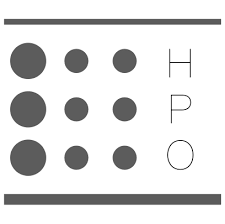Mitochondrial Genomic Tools and DatabasesMSeqDR is Collaborating with the Community to Bring Together Established Tools |
Phenome Portal: Mitochondrial Diseases, Phenotypes, Tools and DatabasesDisease Portal: All MSeqDR data linked to the disease in a single placeSelect a Mitochondrial Disease from the list and view the integrated annotations for associated symptoms, genes, and variants. Data represents in-house effort in compiling disease data from ClinVar, CTDBase, OMIM, HPO, UMDF, NAMDC.HPO Browser: Browse and traversing human phenotype ontology treeView a terms's parent, sister and child terms, along with potential matching diseases. Compare with HPO's report: (HP:0000118) |
Mitochondrial DNA and nuclear DNA Variant Tools:mvTool - Universal mtDNA variant converter and one stop annotation:mvTool converts dozens of mtDNA variant formats into a standard rCRS-based HGVS format. It also converts YRI-based positions into rCRS-based positions. Plus mtDNA specific one-stop variant annotations, with multiple-population frequencies from major mtDNA resources from Mitomap, HmtDB, and the community.VariantOneStop: Complete genomic annotations plus multiple-population frequencies, variant name checking and conversionIt combines MSeqDR's own data, Ensembl VEP, Mutalyzer, ClinVar, multiple sources including PolyPhen, SIFT, the dbNSFP resource, and the CADD scores.It is also the back-end engine for our variant submission tool. HBCR (retiring) variant batch annotation, from a few variants to whole exomes
The Human BP Codon Resource Variant Annotation Pipeline (HBCR) tool is developed by Dr. Xiaowu Gai.
|
Mitochondrial DNA Tools:Phy-Mer
Phy-Mer is a novel alignment-free and reference-independent tool, and it supports input in fasta, fastq, bam, csv formats Pubmed 25505086.
|
GEM.APP at University of Miami
Explore genomic variant data from patients and families with defined diseases. The site is open to the public for a gene-by-gene search and can be filtered by phenotypes and inheritance patterns. Users usually have a distinct hypothesis for a specific gene, such as identifying rare variants that are supportive of disease association.
|
Other 3rd party mitochondrial tools and databases:
A unique multi-national database holding clinical, biochemical and molecular genetic data
General tools and databases:Genome Build Conversion Tools1. The NCBI Genome Remapping Service is a great option to remap between assembly versions. This offers conversion to/from GRCh38. It also offeres "Clinical Remap" and "Alt Remap". 2. The UCSC conversion tool allows you to convert genome coordinates and genome annotation files between assemblies. This offers conversion to/from GRCh38. It includes the major GRC builds as well as the earlier NCBI versions. The current version supports both forward and reverse conversions, as well as conversions between selected species. 3. The Ensembl Assembly Converter - Allows conversion of NCBI 36 and GRCh37 to GRCh38. |
MSeqDR is developed by MSeqDR Consortium and hosted by the CHLA
Copyright 2013-2024 The MSeqDR Consortium
All rights reserved
Feedback about the webpages , or email to MSeqDR webmaster: Lishuang Shen






















